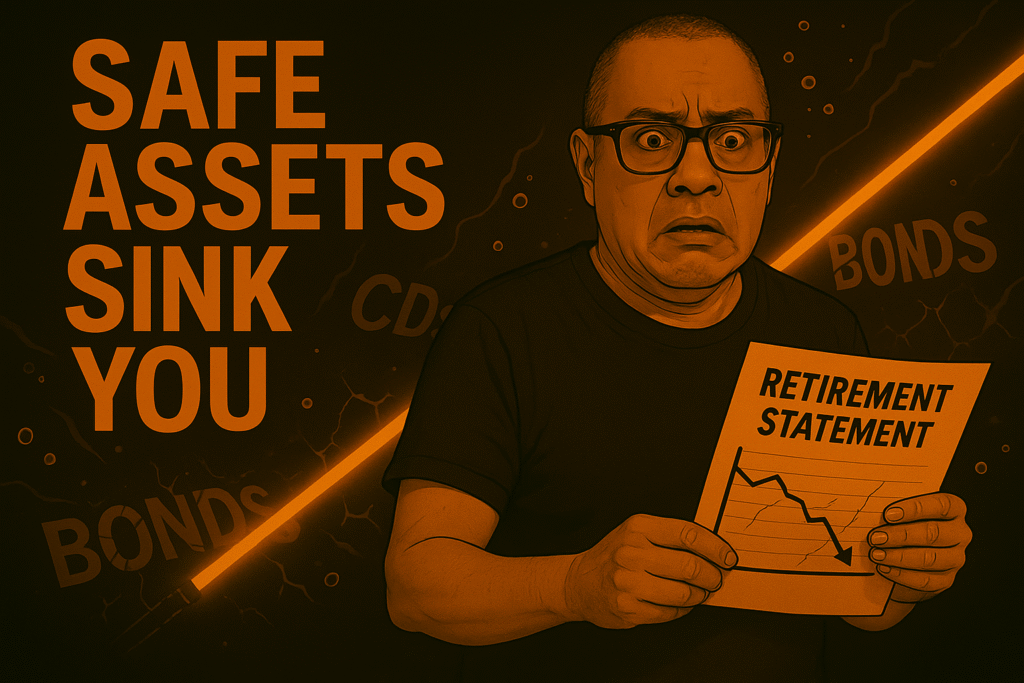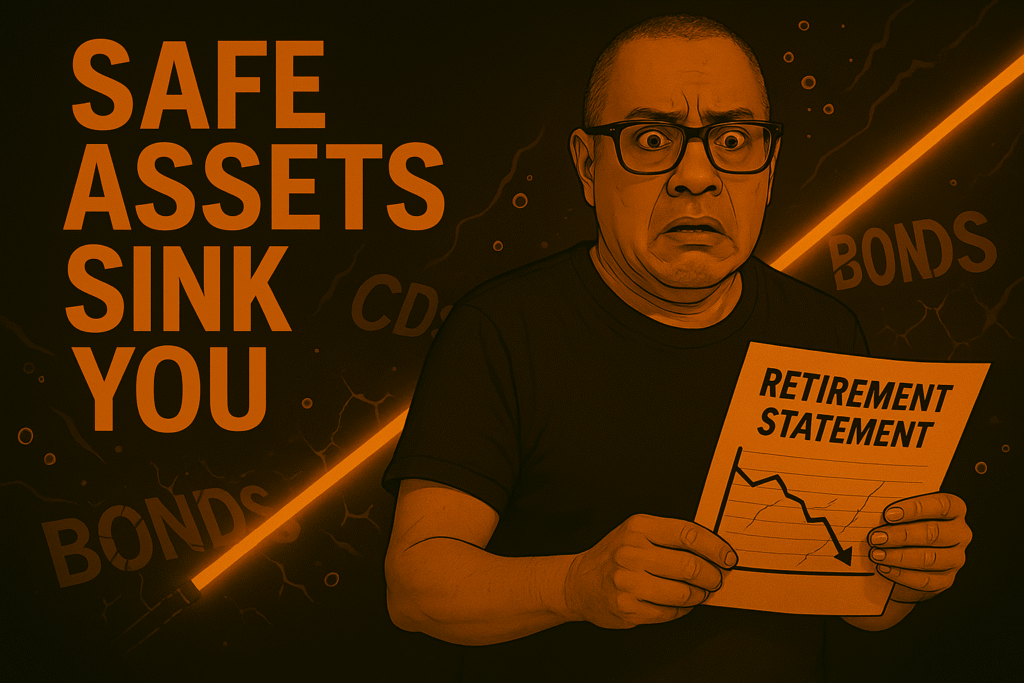
Bonds and CDs protect principal—but when inflation runs hotter than yields, they can quietly bleed purchasing power. Here’s how to audit, defend, and rebuild your stability bucket.
Why “Safe” Assets Can Sink You
The Problem
“Safe” assets can lose to inflation. A 3–4% yield feels steady—at 5% inflation, that’s negative real return. Over time, that spread compounds and quietly drains your retirement plan, especially when early withdrawals meet market volatility.
The 5-Step Stability Bucket Audit
- Reality Check: Compare each bond/CD yield to current inflation; flag negative real returns.
- Shorten Duration: Favor T-bills and short Treasuries (liquidity first).
- Layer Defenses: Add TIPS, quality dividend equities, and a measured real-asset tilt.
- Hedge (Tiny): Consider a 1–5% bitcoin sleeve only in the 10+ year growth bucket (never for income).
- Monitor Real Return: Track results after inflation; re-assess annually with drift bands (±1%).
Example: Plugging the Leak
Before: $500k ladder at 3% “feels” safe → at 5% inflation, real return ≈ −2%/yr. Purchasing power falls ≈ $10k/yr.
After: Redeploy a slice into T-bills + TIPS; keep long-term growth separate; add a micro BTC hedge. Now near-term cash flow is stable and long-term purchasing power gains defenses.
Troubleshooting the Top 5 Obstacles
- Tradition Bias: “Bonds are always safe.” Not in real terms when inflation runs hot.
- Yield Chasing: High nominal rates with hidden risks and negative real returns.
- Advisor Inertia: Old playbooks ignoring inflation reality.
- Volatility Fear: Buckets time-separate volatility—use them.
- Ignoring Inflation: Planning on nominal numbers in a real-return world.
▶️ YouTube Overview — Stability Bucket in 90 Seconds
A fast visual walkthrough of why “safe” assets sink under inflation and how to plug the leaks.
🤖 Quick AI Overview
Bonds and CDs can protect principal but lose purchasing power when inflation exceeds their yields. A modern stability bucket shortens duration, layers inflation-aware assets, and keeps long-term growth separate to avoid forced selling.
Good / Bad / Ugly — Stability Bucket Reality Check
- Good: Bonds/CDs stabilize nominal returns and fund near-term income.
- Bad: When inflation > yield, real returns go negative.
- Ugly: Long duration + hot inflation = double hit (rate risk + purchasing-power loss).
📖 Book of the Day — The Fiat Standard (Saifedean Ammous)
- Good: Brilliant breakdown of how fiat “mines” debt and erodes purchasing power.
- Bad: Dense and ideological tone can be heavy for newcomers.
- Ugly: Limited retirement-specific integration—pair with the Stability Bucket model above.
Stay in the Fight
Disclaimer: This is educational only—not financial, legal, or tax advice. Always consult a fiduciary professional before making changes. I’m just a dude on the internet sharing my thoughts on what I read—from sources like Fidelity Digital Assets, Morningstar, and Saifedean Ammous’ The Bitcoin Standard. Do your own homework and build a plan that fits your life.

